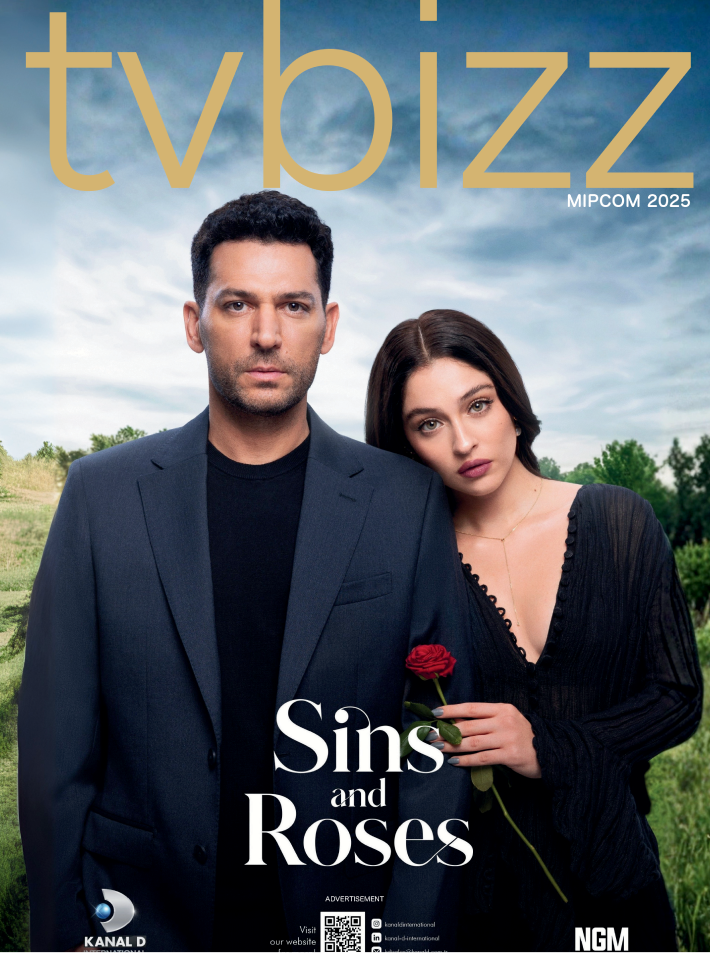Swipe & Snap

“Is it a sea animal? Is it the helmet of a Doctor Who enemy?”
Ok, let’s be honest: you probably do not know anything about Snapchat. Unless you are younger than 34. Recently, a friend of mine posted on Facebook (which you probably use if you are 34 and older) a link to an article from Adweek about the biggest digital trends in 2016. The first comment below the post was the shocker: “What is that logo in the cover of the article? It looks like a sea animal or the helmet of a Doctor Who enemy”. Yup, the poor guy was asking about the Snapchat logo, proving yet again that you cannot hide anything on social media.
But Snapchat, the image messaging app that appeared some five years ago, does not have anything to hide. This does not seem like a ghost story at all. On the contrary, the company (now called Snap Inc.) has moved a lot from a mere app for temporary image sharing. It now describes itself as “a camera company” dedicated to “improve the way people live and communicate”. It has done so by introducing product features such as Stories, the content platform Discover and Spectacles (glasses with built-in camera). And let’s not forget the special filters and lenses that turn regular people into dogs with stuck out tongues, enhances their selfies with glitter and flowers, or gives them that special power to vomit rainbows (apologies, but is there really any other way to describe it?).
Call it as you wish, but Snapchat has also lured many brands into this journey offering a wide variety of ad formats and promotional activations. Moreover, in February 2016 the company struck a deal with Nielsen to measure ad audiences with Nielsen Digital Ad Ratings. There is no doubt that the app has become a new channel to reach those “unreachable” millennials that everyone fears and wants badly in the same time. According to the company presentation, Snapchat reaches 41% of all 18-34 year olds in the US while an average individual US network reaches 6% of the same demo. That makes for nearly 7 times bigger audience while TV executives are still relentlessly trying to prove to millennials that TV is still cool.

It’s obvious. The top down has become the bottom up and everybody wants a piece of the pie. In 2016, NBCUniversal, Turner and Disney|ABC Television Group signed deals with Snap Inc. that will see more content (including originally produced for the app) from the top TV publishers on the Discover platform. This follows Viacom’s Comedy Central and MTV who are engaged with Snapchat for much longer with more than a dozen specially created series and shows. Before these deals, Snapchat tried to create original content (i.e. programming) on its Snap Channel in Discover. But why bother. Again, we live in times when there is so much content available. You feel so good when you discover something worth watching among everything out there, so that you hurry to share and tell your friends about it. This is the new water cooler talk (after all the social media and messenger apps).
Can Snapchat and TV broadcasters snap together successfully?
Why not. Some of the boldest examples of engagement with Snapchat come from traditional European public service broadcasters, believe it or not. End of 2015, the Norwegian pubcaster NRK organized a casting call on Snapchat to find a presenter for its new investigative documentary series. More than 300 people applied with more than 10 hours of snaps. The documentary department of NRK said that there has never been a greater interest for a position. The 24 y.o. journalist Emma Clare Gabrielsen won the competition. She worked in a newspaper and applied for a job in TV via Snapchat. Yes, in 2017 there is nothing weird about that sentence.

A much more straightforward example of the flirt between the app and TV comes from BR, the regional pubcaster in Bavaria, Germany. Its youth program Puls launched in October 2016 what was described as the first ever scripted soap on Snapchat. The series iam.serafina follows the life of 19 y.o Serafina for 14 days. Users were invited to add the Snapchat account iam.serafina and watch the clips. The snaps for the 14 days were produced live. The pubcaster said that the allure of the series is that the user never really knows if this is real or just ‘fiction’. BR said that a second season is in development for 2017 as the engagement with the first one surpassed the expectations with more than 14.000 users per snap/episode.
Another “crossover” project was launched in fall 2016 when Turner’s Bleacher Report and Bigballs Media’s copa90 united forces for Saturdays are Lit, a weekly (let’s call it a) program for Snapchat’s Discover. In classic terms, it might be a Saturday morning football show. In real terms, it is an interactive snap show inspired by and consisting of fan reactions to top football stories from the week. Thus, its content can be relevant to users from different countries and time zones.
So far so good. But what comes next? A talent competition like Idols or Got Talent – snap your talent and let other snappers judge with an emoji or a swipe? Newscasts based on geofilters? Reality programs entirely in vertical video and POV? Not everything should be disruptive. But anything can be eruptive.
Some things are certain. Snapchat wants longer engagement with its users. Content creators and publishers want a quick and direct way to reach young audiences. Advertisers want exposure with the right fit. Users want to have control, to be able to like, but also to ignore, to have a choice but not to have anything imposed on them. And there won’t be an ultimate solution, because there isn’t one. Snapchat might be right for you or not. The main thing is to be entertained in old ways or new and there has never been a greater time to experiment.
But Snapchat, the image messaging app that appeared some five years ago, does not have anything to hide. This does not seem like a ghost story at all. On the contrary, the company (now called Snap Inc.) has moved a lot from a mere app for temporary image sharing. It now describes itself as “a camera company” dedicated to “improve the way people live and communicate”. It has done so by introducing product features such as Stories, the content platform Discover and Spectacles (glasses with built-in camera). And let’s not forget the special filters and lenses that turn regular people into dogs with stuck out tongues, enhances their selfies with glitter and flowers, or gives them that special power to vomit rainbows (apologies, but is there really any other way to describe it?).
Call it as you wish, but Snapchat has also lured many brands into this journey offering a wide variety of ad formats and promotional activations. Moreover, in February 2016 the company struck a deal with Nielsen to measure ad audiences with Nielsen Digital Ad Ratings. There is no doubt that the app has become a new channel to reach those “unreachable” millennials that everyone fears and wants badly in the same time. According to the company presentation, Snapchat reaches 41% of all 18-34 year olds in the US while an average individual US network reaches 6% of the same demo. That makes for nearly 7 times bigger audience while TV executives are still relentlessly trying to prove to millennials that TV is still cool.

Emma Clare Gabrielsen receives the call from NRK that she is selected
It’s obvious. The top down has become the bottom up and everybody wants a piece of the pie. In 2016, NBCUniversal, Turner and Disney|ABC Television Group signed deals with Snap Inc. that will see more content (including originally produced for the app) from the top TV publishers on the Discover platform. This follows Viacom’s Comedy Central and MTV who are engaged with Snapchat for much longer with more than a dozen specially created series and shows. Before these deals, Snapchat tried to create original content (i.e. programming) on its Snap Channel in Discover. But why bother. Again, we live in times when there is so much content available. You feel so good when you discover something worth watching among everything out there, so that you hurry to share and tell your friends about it. This is the new water cooler talk (after all the social media and messenger apps).
Can Snapchat and TV broadcasters snap together successfully?
Why not. Some of the boldest examples of engagement with Snapchat come from traditional European public service broadcasters, believe it or not. End of 2015, the Norwegian pubcaster NRK organized a casting call on Snapchat to find a presenter for its new investigative documentary series. More than 300 people applied with more than 10 hours of snaps. The documentary department of NRK said that there has never been a greater interest for a position. The 24 y.o. journalist Emma Clare Gabrielsen won the competition. She worked in a newspaper and applied for a job in TV via Snapchat. Yes, in 2017 there is nothing weird about that sentence.

© BR/Max Hofstetter/Lisa Hinder
A much more straightforward example of the flirt between the app and TV comes from BR, the regional pubcaster in Bavaria, Germany. Its youth program Puls launched in October 2016 what was described as the first ever scripted soap on Snapchat. The series iam.serafina follows the life of 19 y.o Serafina for 14 days. Users were invited to add the Snapchat account iam.serafina and watch the clips. The snaps for the 14 days were produced live. The pubcaster said that the allure of the series is that the user never really knows if this is real or just ‘fiction’. BR said that a second season is in development for 2017 as the engagement with the first one surpassed the expectations with more than 14.000 users per snap/episode.
Another “crossover” project was launched in fall 2016 when Turner’s Bleacher Report and Bigballs Media’s copa90 united forces for Saturdays are Lit, a weekly (let’s call it a) program for Snapchat’s Discover. In classic terms, it might be a Saturday morning football show. In real terms, it is an interactive snap show inspired by and consisting of fan reactions to top football stories from the week. Thus, its content can be relevant to users from different countries and time zones.
So far so good. But what comes next? A talent competition like Idols or Got Talent – snap your talent and let other snappers judge with an emoji or a swipe? Newscasts based on geofilters? Reality programs entirely in vertical video and POV? Not everything should be disruptive. But anything can be eruptive.
Some things are certain. Snapchat wants longer engagement with its users. Content creators and publishers want a quick and direct way to reach young audiences. Advertisers want exposure with the right fit. Users want to have control, to be able to like, but also to ignore, to have a choice but not to have anything imposed on them. And there won’t be an ultimate solution, because there isn’t one. Snapchat might be right for you or not. The main thing is to be entertained in old ways or new and there has never been a greater time to experiment.









































